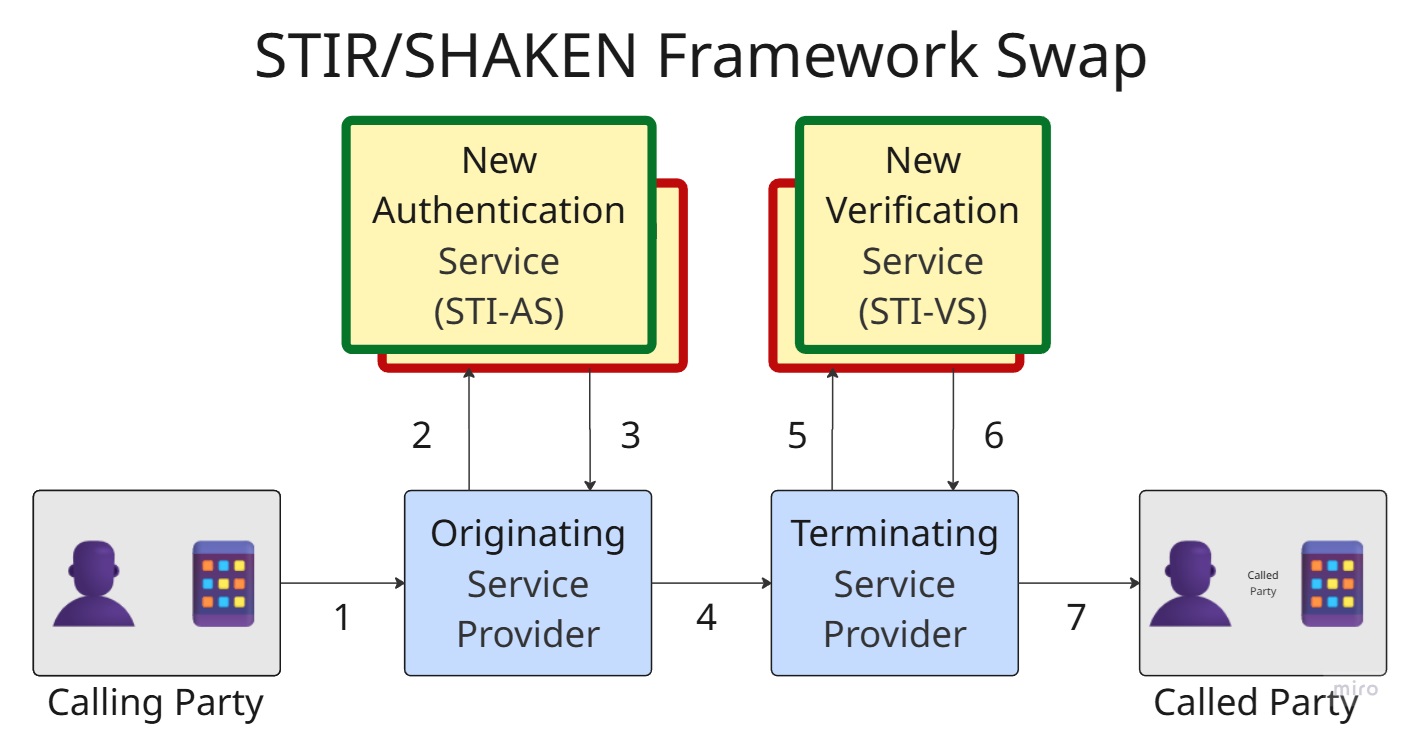Detailed Breakdown
The Problem:
While the company had been fully STIR/SHAKEN compliant since 2019, key underlying services were leased from a third-party vendor into an on-prem solution. This dependency created two major issues:
• A rigid framework preventing us from developing new value-added services our customers were asking for.
• Significant ongoing operational cost with a high risk of rising renewal rates.
The Opportunity:
We saw a clear opportunity to significantly reduce our annual operational expenses by migrating to a new underlying vendor. More strategically, a competing vendor was able to provide us with the flexibility needed to build new features and services on top of the compliance framework, turning a cost center into a potential platform for innovation and revenue generation.
Target Persona:
The primary personas for this project were internal:
• Network Engineering who would perform the migration.
• FP&A who were focused on the cost-saving benefits.
• Product & Leadership who were focused on the future revenue-generating opportunities.
Key Insights:
Our vendor discussions showed that the capabilities we needed for future services were not on our current vendor's roadmap. This confirmed that our existing partnership, while functional for basic compliance, was becoming a strategic bottleneck. The risk of inaction was stagnation, continued high costs, and no opportunity for future revenue streams.
Product Vision:
To seamlessly transition our underlying STI-AS and STI-VS service infrastructure to a more agile and cost-effective foundation, ensuring 100% continuity of our compliance posture while enabling a new wave of product innovation.
Strategic Roadmap:
The migration was approached as a "like-for-like" replacement to minimize risk.
• Phase 1 executed a direct swap of all technical dependencies.
• Phase 2 conducted comprehensive regression testing to validate functional parity.
• Phase 3 established a stable and proven new platform environment.
• Phase 4 deferred all new feature development until after the migration was complete, allowing us to validate the new platform and then explore its new capabilities in a subsequent project.
Solution:
We executed a carefully planned migration, swapping the vendor-leased services with the new provider's infrastructure. This involved re-establishing API connections, updating configurations in our network elements, and ensuring data flowed correctly through the new system.

Key Features:
The primary goal of this project was not to launch new end-user features, but to achieve platform-level outcomes to enable future products and services:
• Successful migration of all STIR/SHAKEN dependencies to the new vendor software.
• Maintained 100% compliance with FCC regulations throughout the transition.
• Achieved significant reduction in annual operational costs.
• Created new API endpoints and data repositories for future development aspirations.
Process & Collaboration:
As Product Manager, I acted as the central hub for the cross-functional team in this effort. Aligning business needs with Engineering for the technical execution, collaborating with Legal and Finance to validate and recognize the business case compliance and cost savings, and with procurement to help negotiate and finalize the new vendor contract. Regular communication and a shared understanding of the "like-for-like" replacement strategy were critical to keeping the project on track and avoiding scope creep.
Results & Impact:
The migration was completed on schedule with zero downtime or impact on compliance status. The project resulted in a significant reduction in annual vendor costs for this service. Most importantly, this project provided the technical flexibility to begin planning a new suite of call validation and analytics services on the horizon.
Reflection:
This project underscored the importance of viewing infrastructure not just as a cost center, but as a strategic asset. While a "like-for-like" replacement sounds simple, the coordination required to swap a critical, live dependency is immense. It proved the value of a phased approach, ensuring stability first before pursuing new features, which built confidence across the organization.